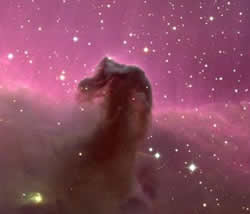Difference between Nebula and Galaxy
Key Difference: Nebula is a cloud in deep space consisting of gas or dirt/dust (e.g. cloud formed after a star explodes). A group of numerous stars, dust, planets and other interstellar matter, tied together by a gravitational force is known as a Galaxy.
 Nebula is a cloud in deep space consisting of gas or dirt/dust. The word Nebula has been derived from the Latin word, meaning “cloud”. Nebula is also called as nebulae. Dust and gas clouds are called nebula. In the earlier time, galaxies were also called nebula by astronomers because of their fuzzy appearance. However, nowadays the word nebula is used for extended objects consisting mostly of gas and dust. It comes in many shapes and sizes and forms in many different ways.
Nebula is a cloud in deep space consisting of gas or dirt/dust. The word Nebula has been derived from the Latin word, meaning “cloud”. Nebula is also called as nebulae. Dust and gas clouds are called nebula. In the earlier time, galaxies were also called nebula by astronomers because of their fuzzy appearance. However, nowadays the word nebula is used for extended objects consisting mostly of gas and dust. It comes in many shapes and sizes and forms in many different ways.
Generally, there are four kinds of nebulae in the astronomers’ heavens. All types of nebulas are found within our own star system, of which one is the Galaxy.
 A collection comprising of stars, dust, planets, and other interstellar matter bound together by gravity is termed as a Galaxy. A Galaxy can contain any number of elements. For example, a small Galaxy may just comprise of a few thousand stars, whereas a large Galaxy may contain billions of stars in it. Milky Way is an example of a Galaxy; it is a Galaxy that consists our Earth and Sun. The astronomers can only provide information about the known and observable Galaxies in the Universe. However, there might be various other Galaxies present in the whole Universe.
A collection comprising of stars, dust, planets, and other interstellar matter bound together by gravity is termed as a Galaxy. A Galaxy can contain any number of elements. For example, a small Galaxy may just comprise of a few thousand stars, whereas a large Galaxy may contain billions of stars in it. Milky Way is an example of a Galaxy; it is a Galaxy that consists our Earth and Sun. The astronomers can only provide information about the known and observable Galaxies in the Universe. However, there might be various other Galaxies present in the whole Universe.
A round and massive spiral nebula may also be called an Island Universe. It is a system of stars and heavenly bodies in itself. It may also be called as Galaxy. Thousands perhaps millions of these huge wheels of stars dot the vast reaches of outer space.
In short, a galaxy is a massive collection of stars and nebulae.
Comparison between Nebula and Galaxy:
|
|
Nebula |
Galaxy |
|
Description |
Nebula is a cloud in deep space consisting of gas or dirt/dust (e.g. cloud formed after a star explodes). |
A group of numerous stars, dust, planets and other interstellar matter, tied together by a gravitational force is known as a Galaxy. |
|
Types |
|
|
|
Made of |
|
|
|
Contains |
Nebula contains of carbon, nitrogen and oxygen, and then they finally expand and merge. |
Galaxies contain varying number of star systems, star clusters and types of interstellar clouds. |
|
Examples |
|
|
Image courtesy: blackskies.org, cosmotography.com









Comments
Cheers this helped me with my physics.
Jack
Wed, 11/26/2014 - 14:54
I am interested in if these gases combined with dust can become deadly and create a deadly gassy toxic tornado if they reached earths atmosphere
Yorkieminnie
Wed, 09/24/2014 - 03:36
ok my name is Frankie Hathaway in the haunted hathaways I think you should be a astrologer if you aren't one
breanna yde
Wed, 03/05/2014 - 17:09
oui it was very reasonable....
gabriella
Wed, 03/05/2014 - 17:05
Add new comment